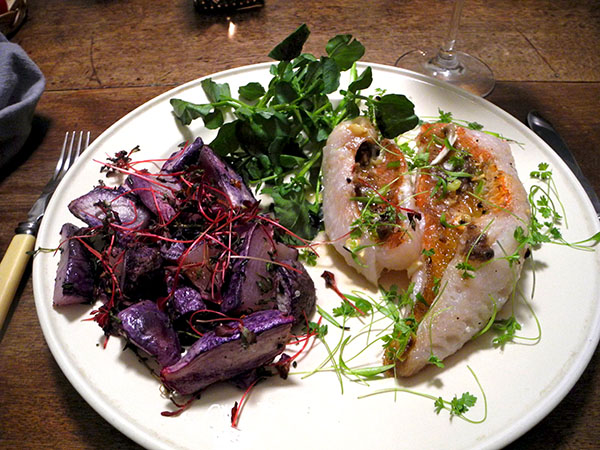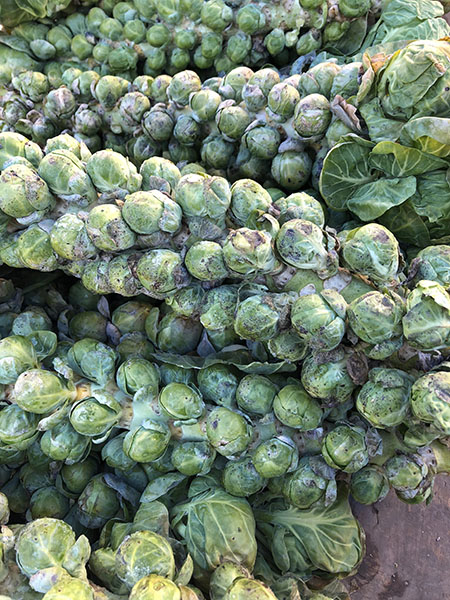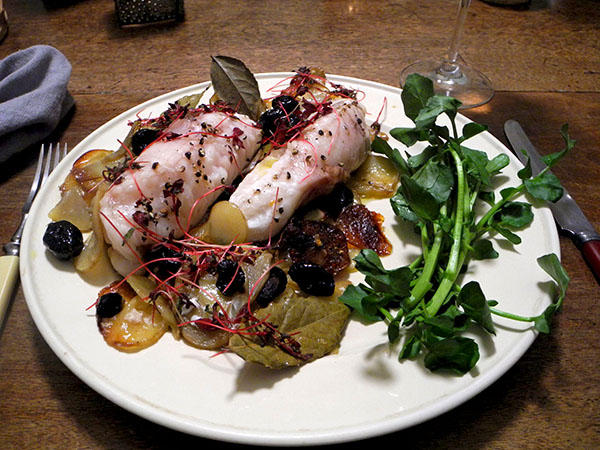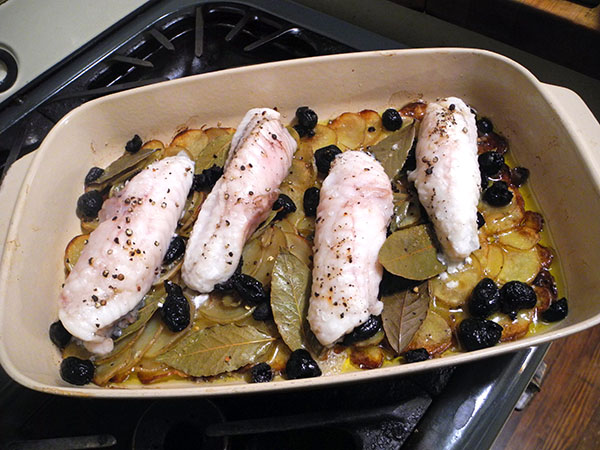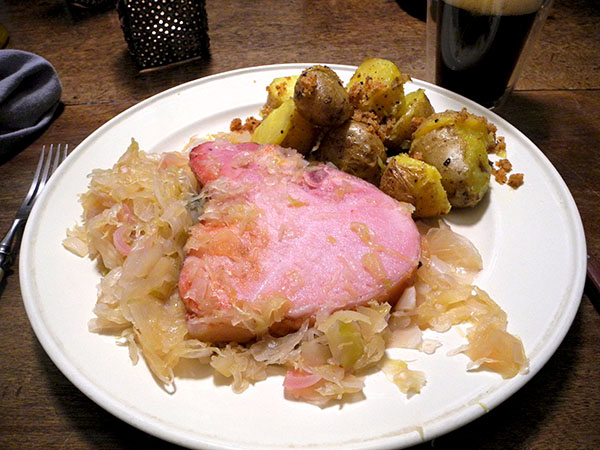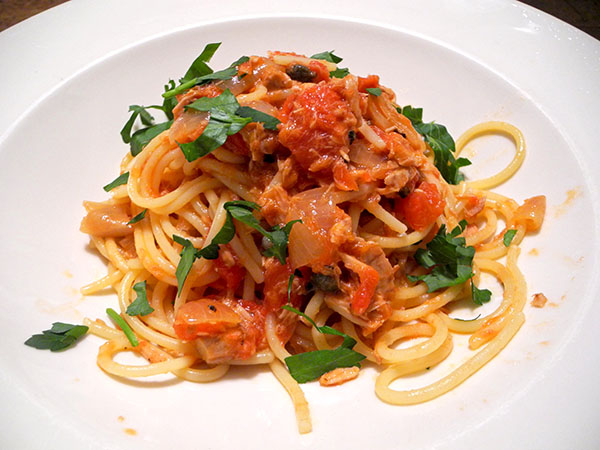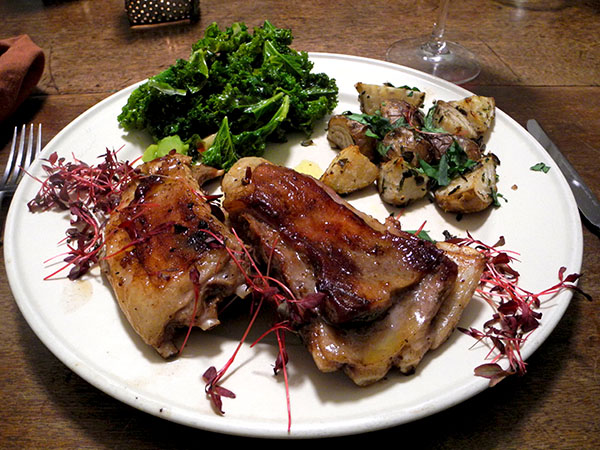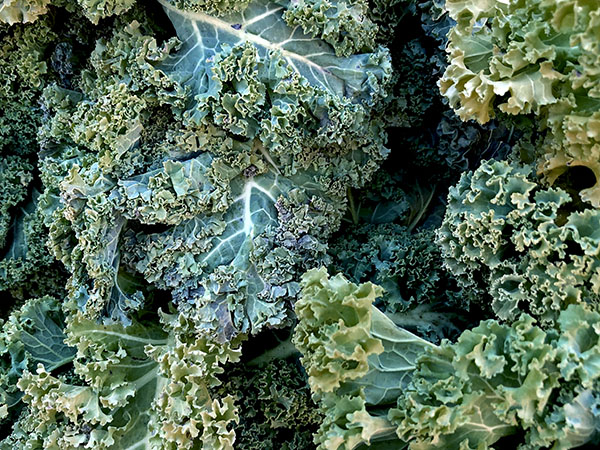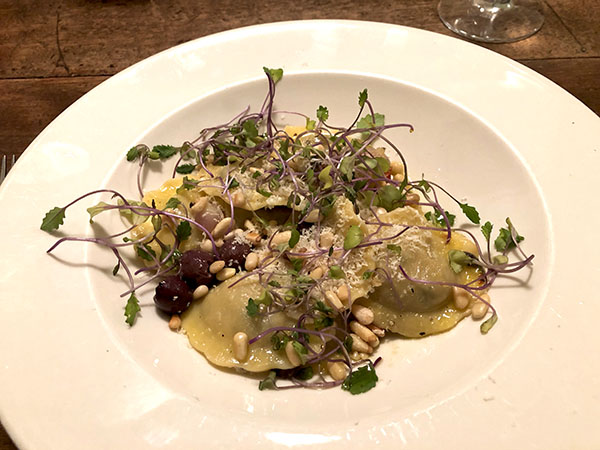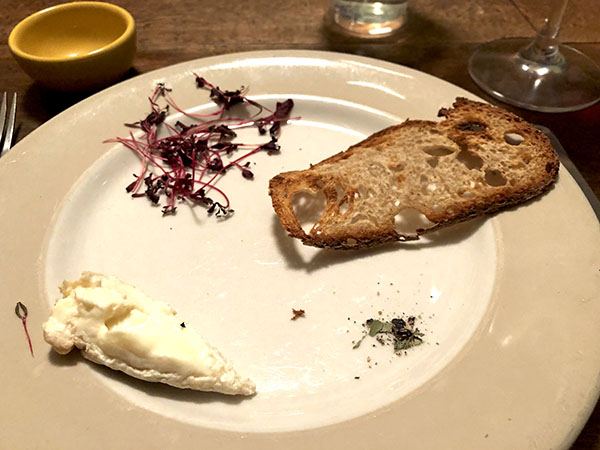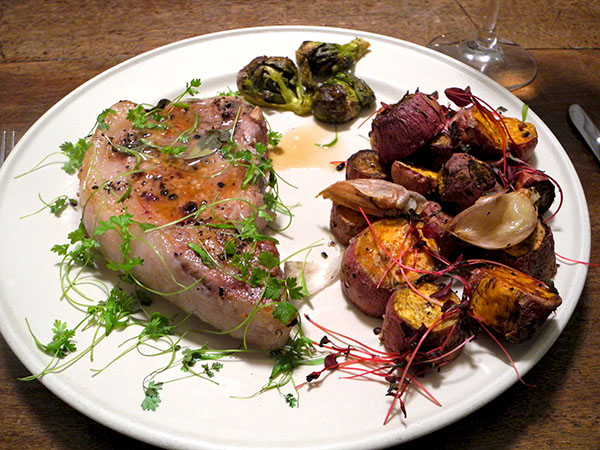
I figured pork chops would be an excellent side for the sweet potatoes I had been looking forward to, but the chops from Flying Pigs Farm are always so good they weren’t going to be incidental to anything. Also, as excited as I was about the potatoes, I was equally enthusiastic about using myrtle on the pork for the first time.
As for those sweet potatoes, when I asked Keith (Keith Stewart, the vegetable sage) what cultivar they were, he told me that at this time of the year it was probably impossible to know which of the two they had planted, Covington or Beauregard, were in the bin that day, so my call would be as good as his. He assured me however that it was not that they had been up to any cultivar-ian miscegenation, (I asked), that it was only that they had been moving into each other’s fields somewhat indiscriminately.

I was going to add some watercress to the plate, for something green, but then I remembered that, from among the dozens of smaller Brussels sprouts I had roasted on Thursday, I had kept back 3 significantly larger ones, for just such a circumstance.
- two 8-ounce bone-in loin pork chops from Flying Pig Farm, thoroughly dried, seasoned with sea salt and freshly-ground black pepper and sprinkled with some small leaves and crushed berries (5?) of dried Italian myrtle [It. Mirto], berries and leaves, from Buon Italia seared quickly on both sides inside a heavy enameled cast-iron pan, half of a Whole Foods Market organic lemon squeezed over the top, then left in the pan between the chops, placed in a 425º oven for about 14 minutes (flipped halfway through, after which the lemon was squeezed on top again and replaced in the pan between them), removed from the oven, arranged on the plates and garnished with micro chervil from Two Guys from Woodbridge, some of the really luscious pan juices spooned over the top, the remainder placed on the table inside a glass sauce boat
- three medium Brussels sprouts from John D. Madura Farms, washed, trimmed, dried, and halved, tossed with olive oil, sea salt and freshly-ground black pepper, roasted in a 400º oven on a small unglazed Pampered Chef oven pan until they were browned and crisp on the outside, about 15 or 20 minutes
- less than one pound of small sweet potatoes (either Covington or Beauregard) from Keith’s Farm, unpeeled, but washed thoroughly, sliced into 3-quarter-inch pieces, tossed in a bowl with olive oil; sea salt; freshly-ground black pepper; 3 large unpeeled Rocambole garlic cloves, also from Keith’s Farm; a tablespoon or so of small dried sage leaves which had originally come fresh from Stokes Farm; and a bit of crushed dark dried habanada pepper, originally fresh from Norwich Meadows Farm, spread onto a large well-seasoned Pampered Chef unglazed ceramic oven pan, roasted T 400º for about 30 minutes, garnished with micro amaranth from Two GUys from Woodbridge
- the wine was a California (Napa) white, La Tapatia Chardonnay Carneros 2016, from Naked Wines
- the music was Mozart’s very early (1767) opera, ‘Apollo Et Hyacinthus’, from the album, ‘Complete Mozart Edition Vol 26’
